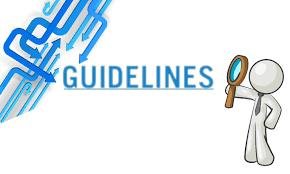With the overwhelming fines sanctioned to many organizations that aren’t compliant to the rules and regulations of GDPR, many businesses strive hard to ensure that they comply with it. Due to the strict enforcement, businesses and companies are aggressively seeking assistance as to how they can manage their privacy policy, which should be compliant to GDPR.
The main purpose of GDPR is to securely ensure that the personal data of the consumers are being protected. It is even enhanced with the goal to get back the confidence of every individual with regard to cyber attacks and crimes.
In this article, we will be talking about the ways to make sure that you are far away from harsh fines and sanctions imposed.
The road to compliance

In ensuring that your organization is compliant with the rules and regulations set by GDPR, there are several guidelines you have to follow. But before moving forward, you should learn if your business is affected by it.
The scope of GDPR only covers those organizations that have any dealings with EU citizens. This includes the businesses that are operating in the EU or does personal processing of the data of its citizens. This is regardless of whether the organization has a physical office in the EU. So long as it uses, processes and stores data relating to EU citizens, it is subject to compliance.
Meanwhile, the execution of this regulation has an exception. While GDPR’s sole goal is to make sure that small and large business enterprises are compliant, there is still an exception to it. GDPR has clearly specified that it only covers those businesses with at least 250 employees. Meaning, those who have employees less than that number aren’t required to keep the data record unless it has a greater impact on how data is being managed and processed.
Now that we have already cleared up the first step and you considered yourself to be covered to the regulations being set, let us move forward to the guidelines.
The guidelines

As you are already aware of the scope and coverage of GDPR’s regulations, effectively executing your administration to the data is the vital part. In order to ensure that the information freely given with consent by your consumer is being taken care of, you should follow the guidelines below:
Data storage location
The main arrangement of regulations set by GDPR requires the data controllers and processors to know where the information collected is stored. There are various Data Loss Prevention solutions that have the capability to scan the entire organization’s computer in order to discover personally identifiable information and sensitive data. It also figures out file names and extensions to easily help the company know where the data goes. In times of request, the organization can easily generate reports using it.
Erase all the data as soon as it no longer serves the purpose
Another arrangement of regulations set by GDPR is the collection of data of an organization from a person as needed. As soon as it no longer serves its purpose and is no longer needed, the organization should delete the data. In the manner of data deletion, encryption is necessary to prevent any breach or any further serious result.
This also prevents the unnecessary use of data for lawfulness and fairness. Ensure that all data are being used and processed fairly. Being clear to your consumer on how the data is being processed entails compliance.
Data minimization
As an organization, you should ensure that only the required data is collected and processed. Information that you must ask the consumers should be relevant to the purpose of the dealing.
Prohibiting of personal data usage is a must
As clearly specified by GDPR, the use of personal data is solely utilized legitimately. To ensure GDPR’s compliance, an organization should restrict the use of personal data, especially outside business purposes. This also entails the prohibition of uploading of information using personal storage services. Hence, using a secured tool or solution is necessary in order to prevent any transfer of data outside the main computer network. This will help the organization to keep the information secure, and from being uploaded out of legitimacy.
Prevention of data loss
As discussed above, the use of a secured tool or solution can help the company manage the activity of data usage. With the same scope, this also covers the prevention of data loss. Being compliant with GDPR, an organization must be responsible for handling the sensitive information of its consumer. In case of loss or tampered data, this only mirrors how the organization is negligent to data protection.
Security standards
As an organization, you should ensure that you have the appropriate security standards and measures in place. The accountability and responsibility of a certain business to oversee personal information and sensitive data is vital. Hence, protecting and safeguarding it is an important factor. This includes encryption of data management and processing.
Educate all your staff
To be compliant doesn’t mean that you are the only one that knows how. An organization should educate all its staff that has access to the data. This includes properly presenting how sensitive information is important and ensuring that the entire personnel that has access to the information knows how sensitive the information they process is.
Preparation and back up
In case of any technical issues, having such a backup and knowledgeable preparation can help in preventing serious data loss.
Have a data protection staff
Having a data protection staff can help an organization ensure the prevention of any cyber-attacks. This can be your reputable IT staff or someone who knows how to safeguard sensitive information.
Make sure that only legitimate personnel have access
Ensuring that only those people who have a legitimate purpose are the ones who have access. By doing so, implementing password driven access can be very much helpful.
Conclusion
In the compliance of GDPR set rules and regulations, organizations are setting a great example of data protection. The administration of proper utilization and safeguarding of data only imposes accountability and responsibility. Not only to prevent any harsh fines but also to mirror how the business operates in protecting their consumers, especially their personal information. The guide will show you how to ensure that you comply and not miss out on something. It will also let you understand how to keep your business from encountering serious troubles and problems. The only goal is to ensure that all the data collected are used and processed fairly and lawfully.



